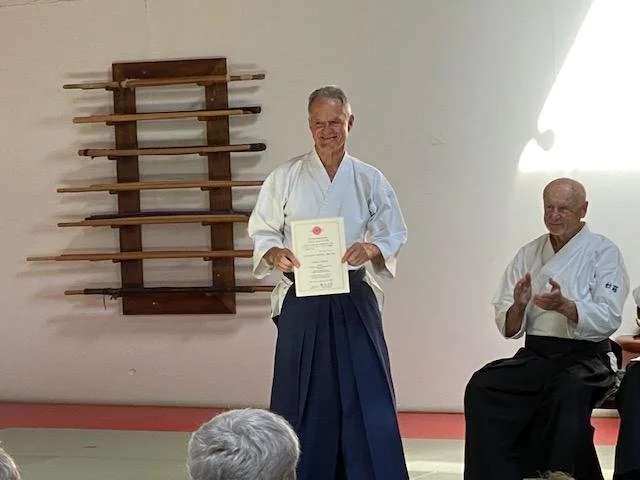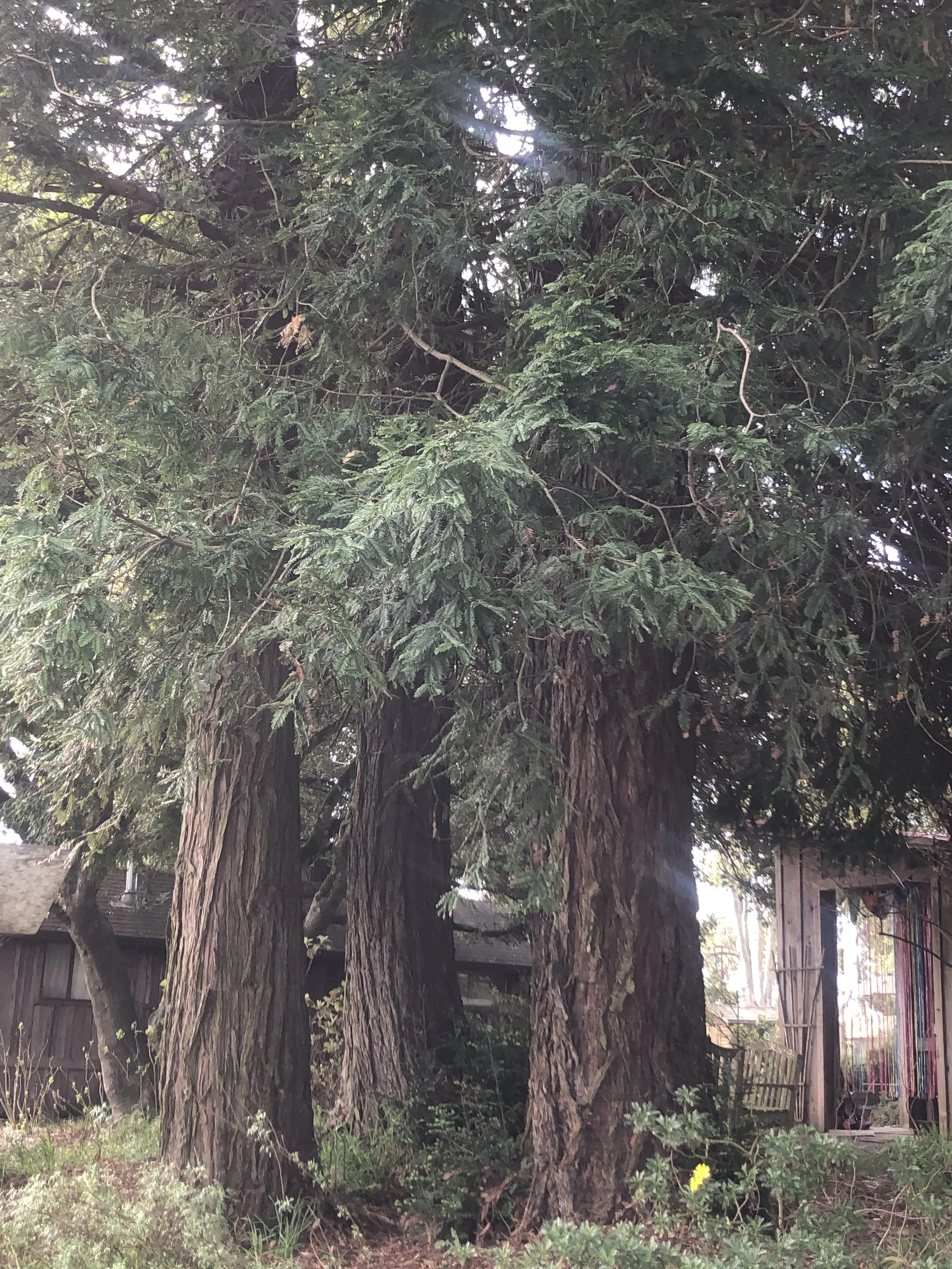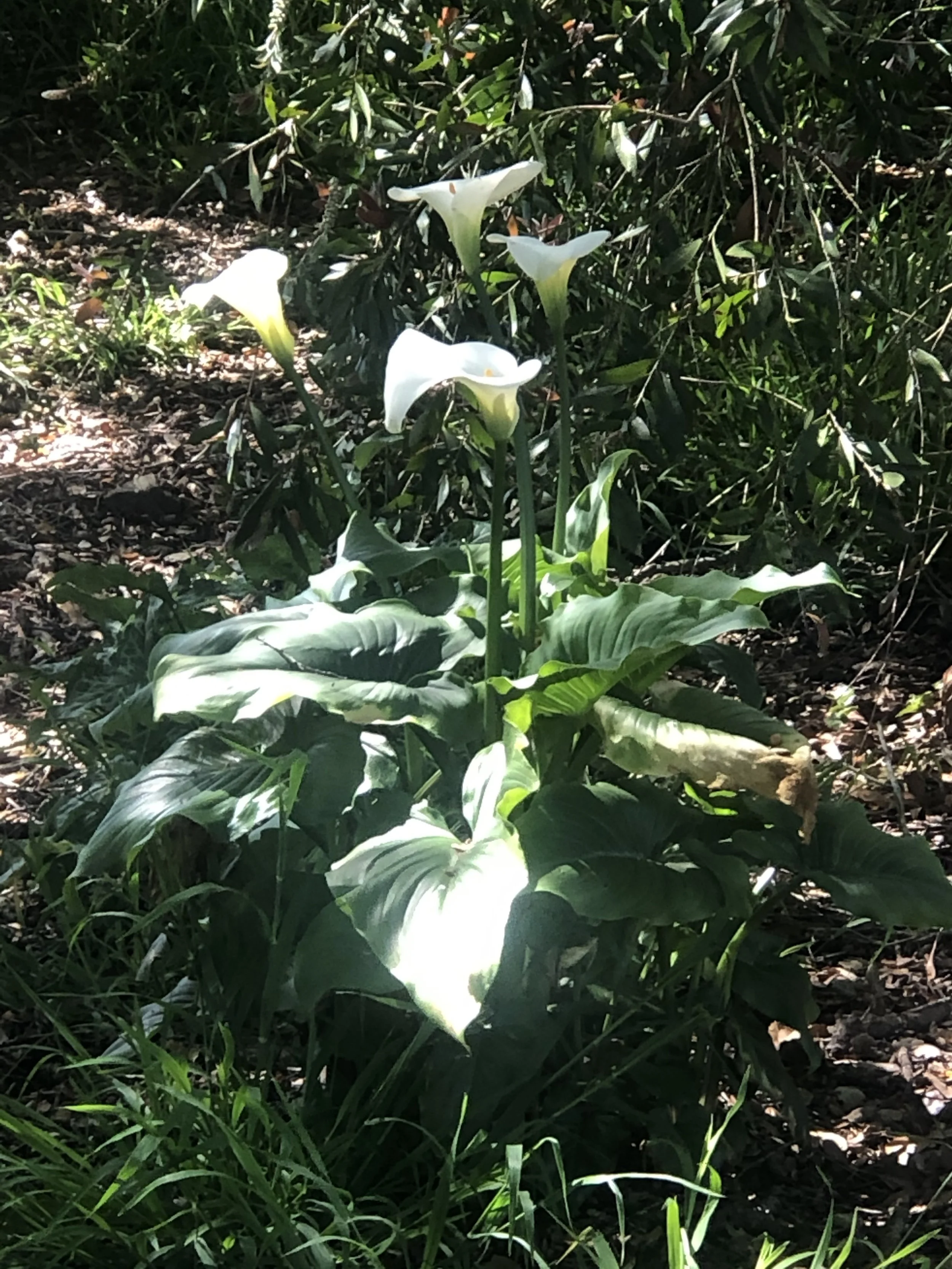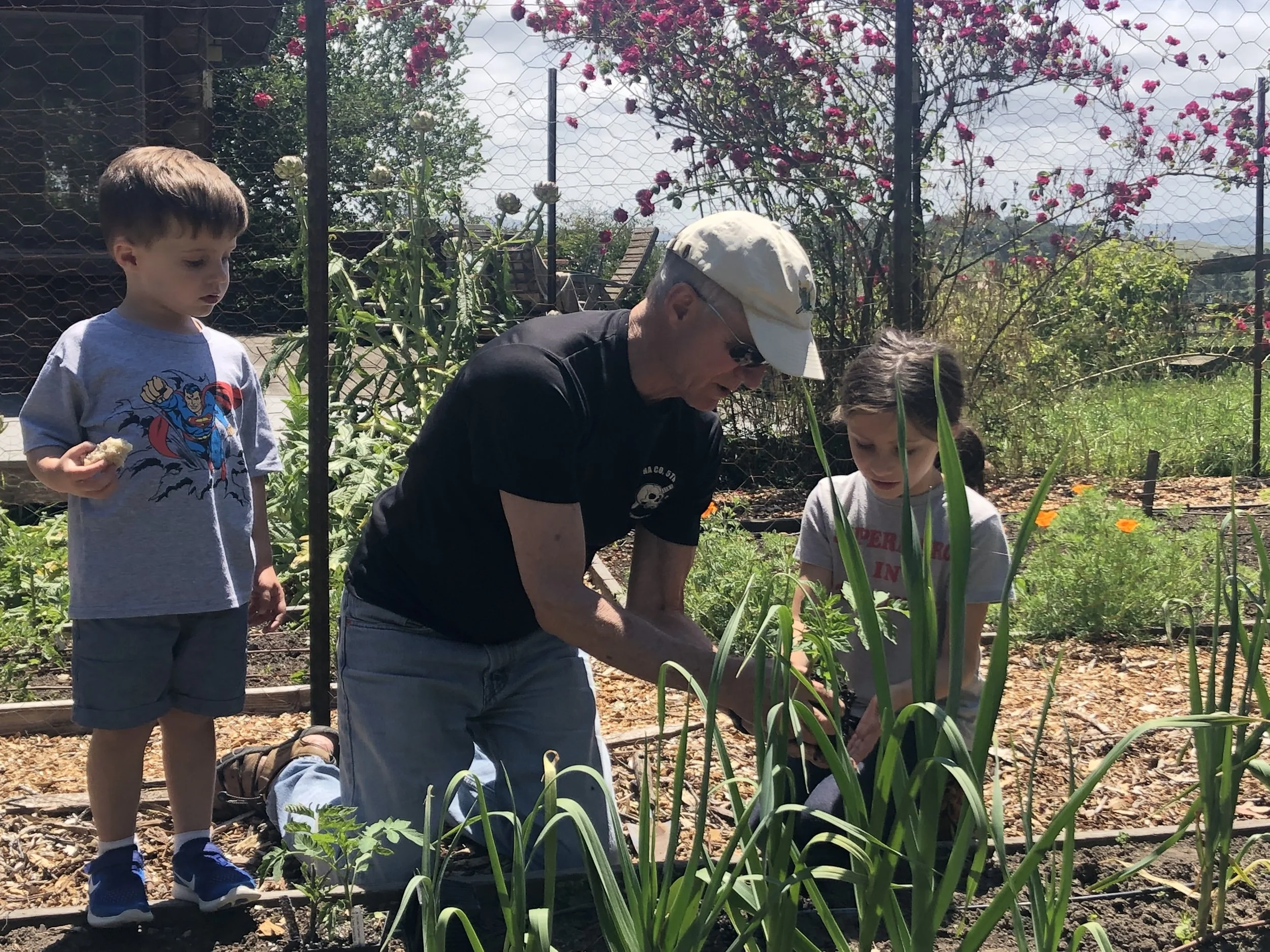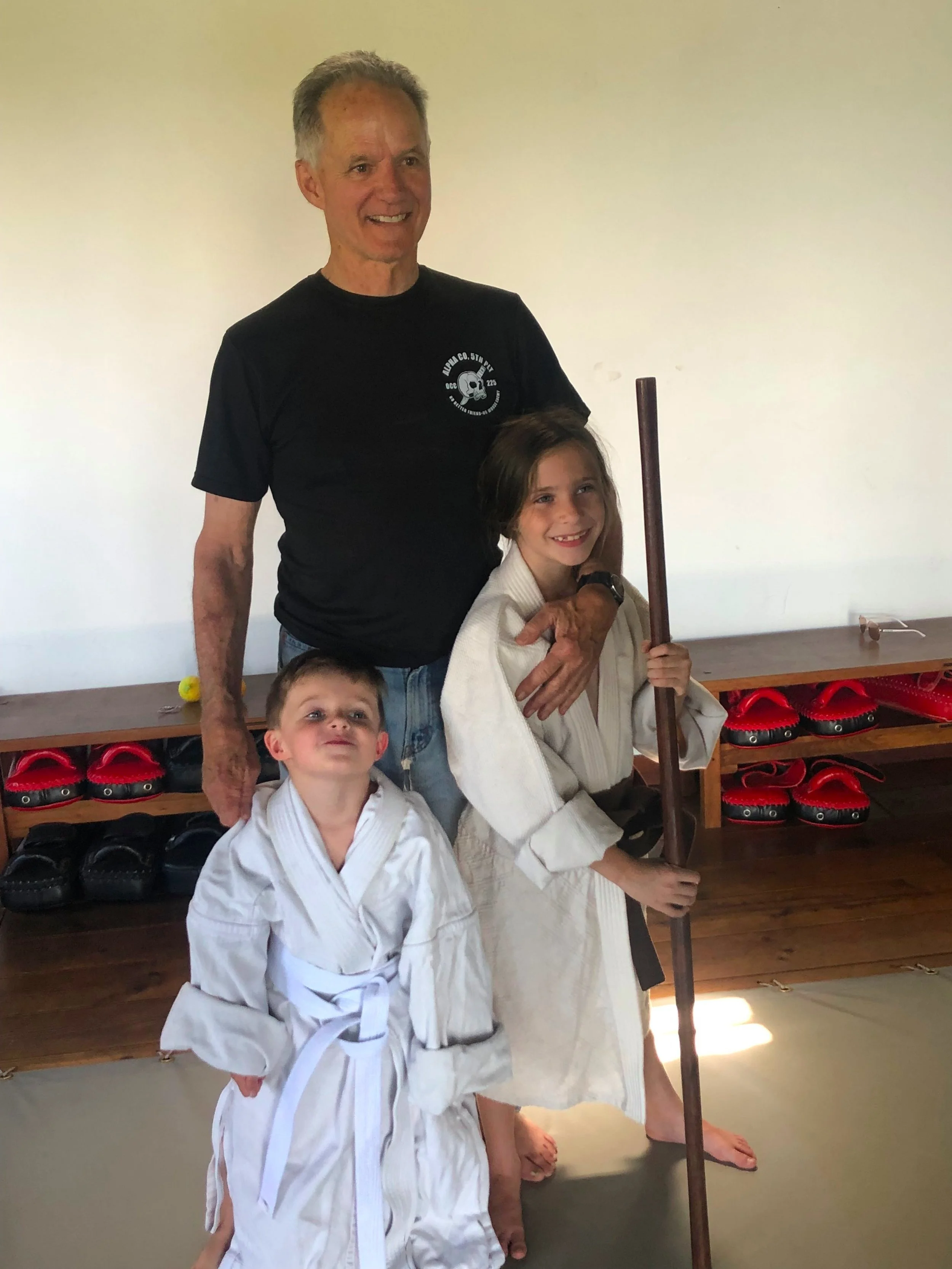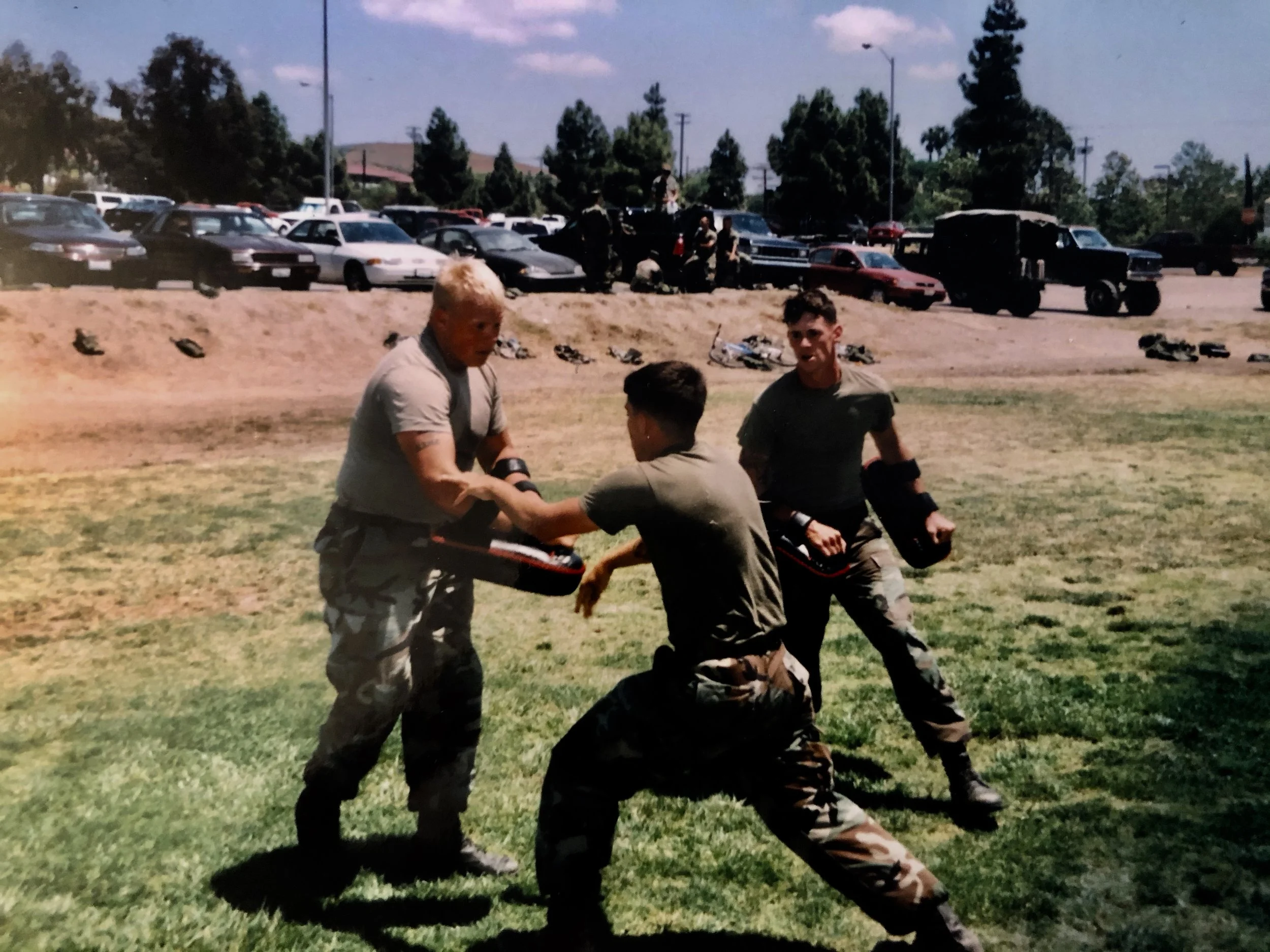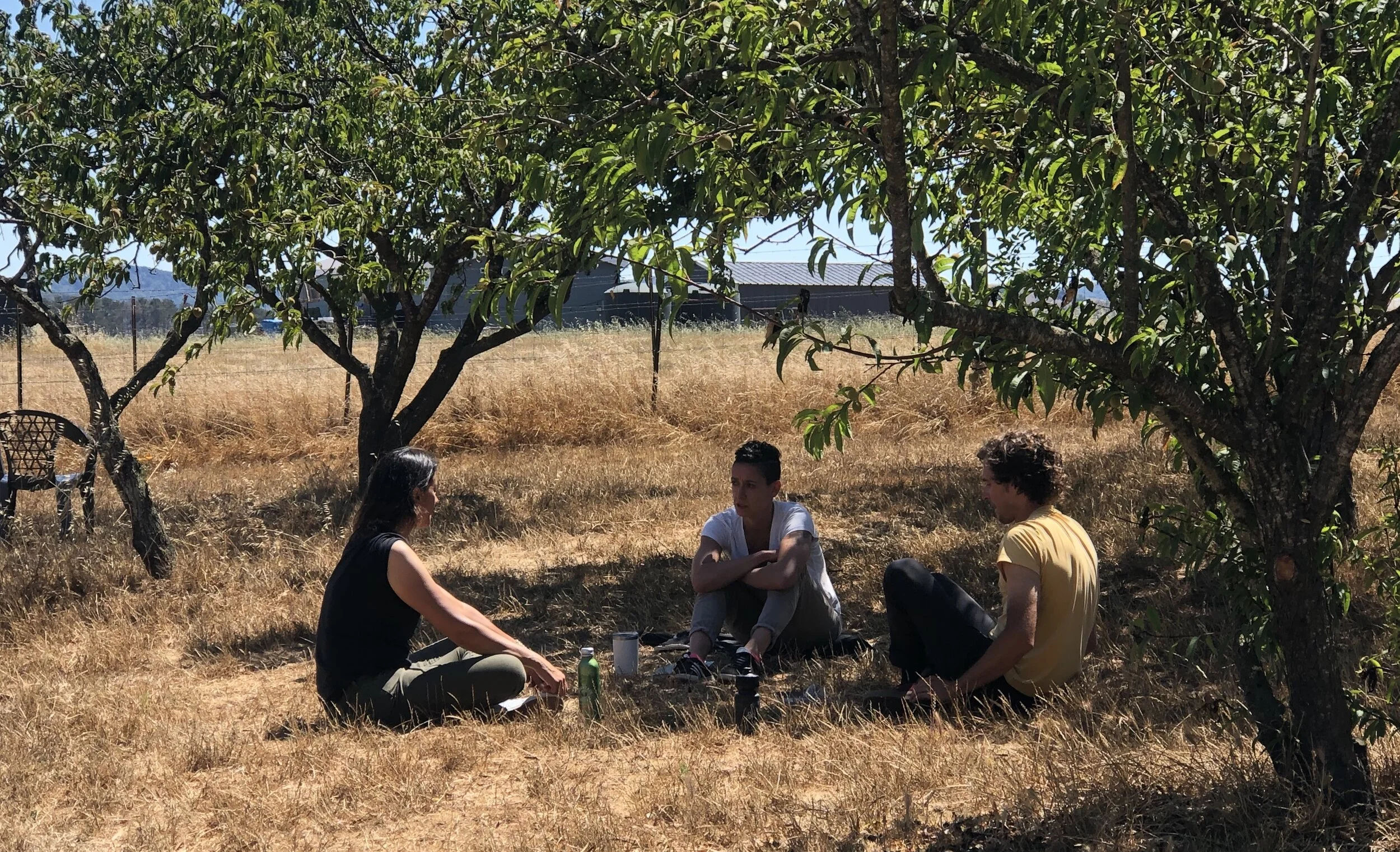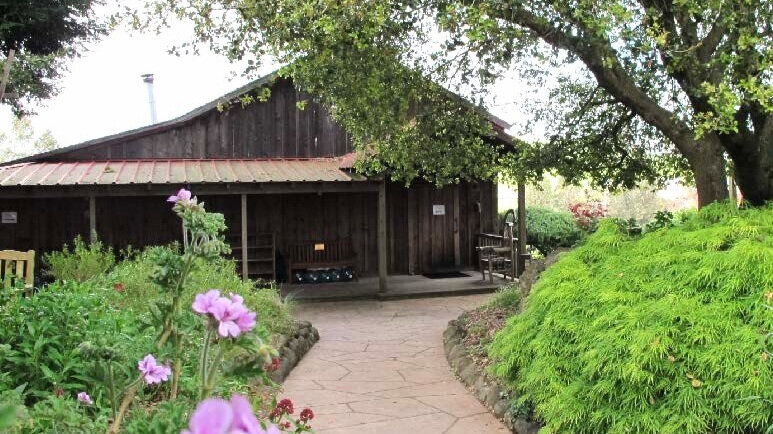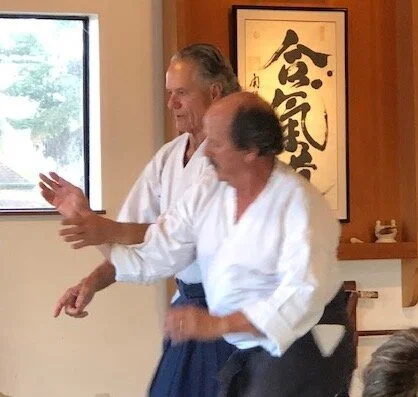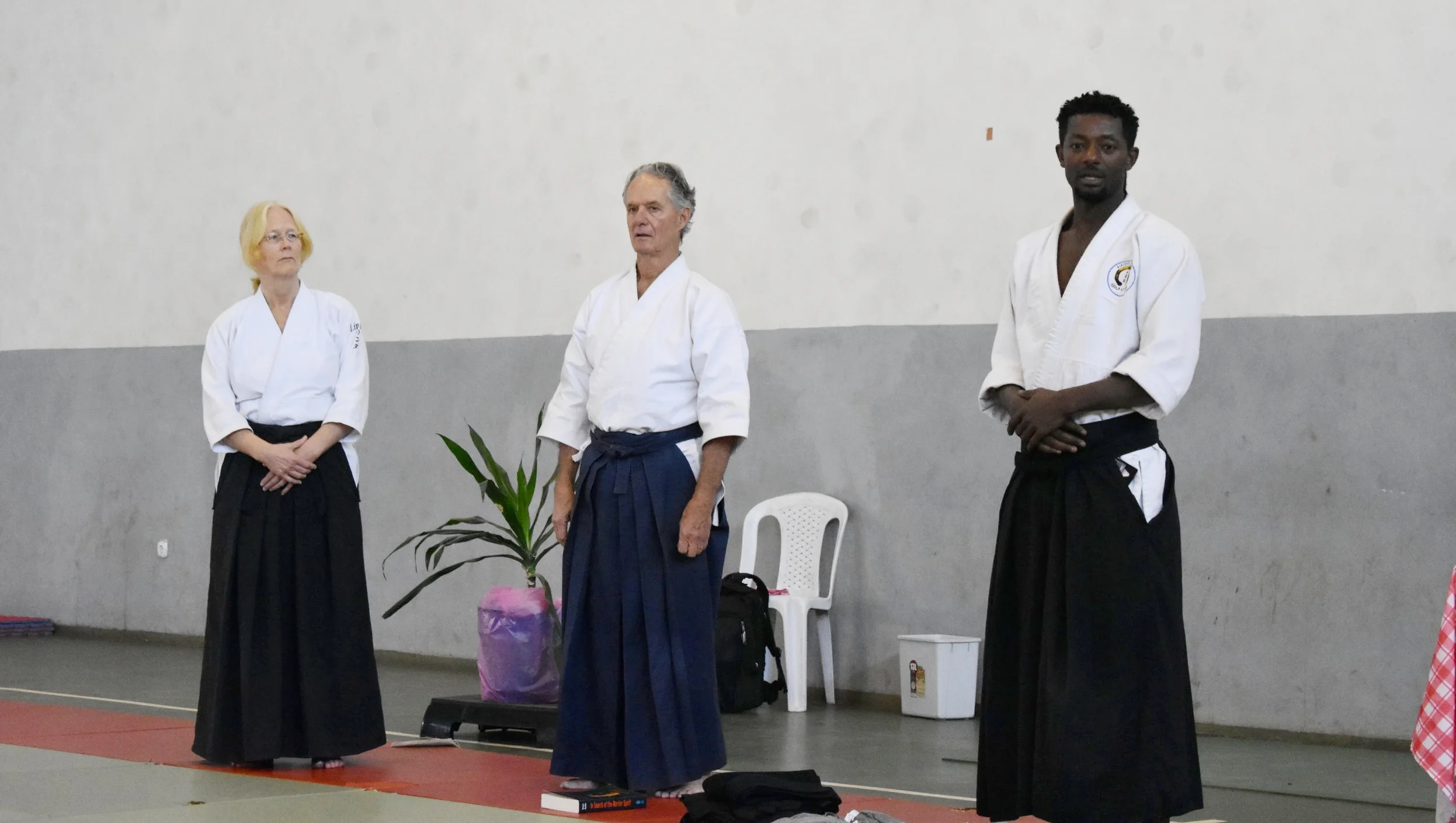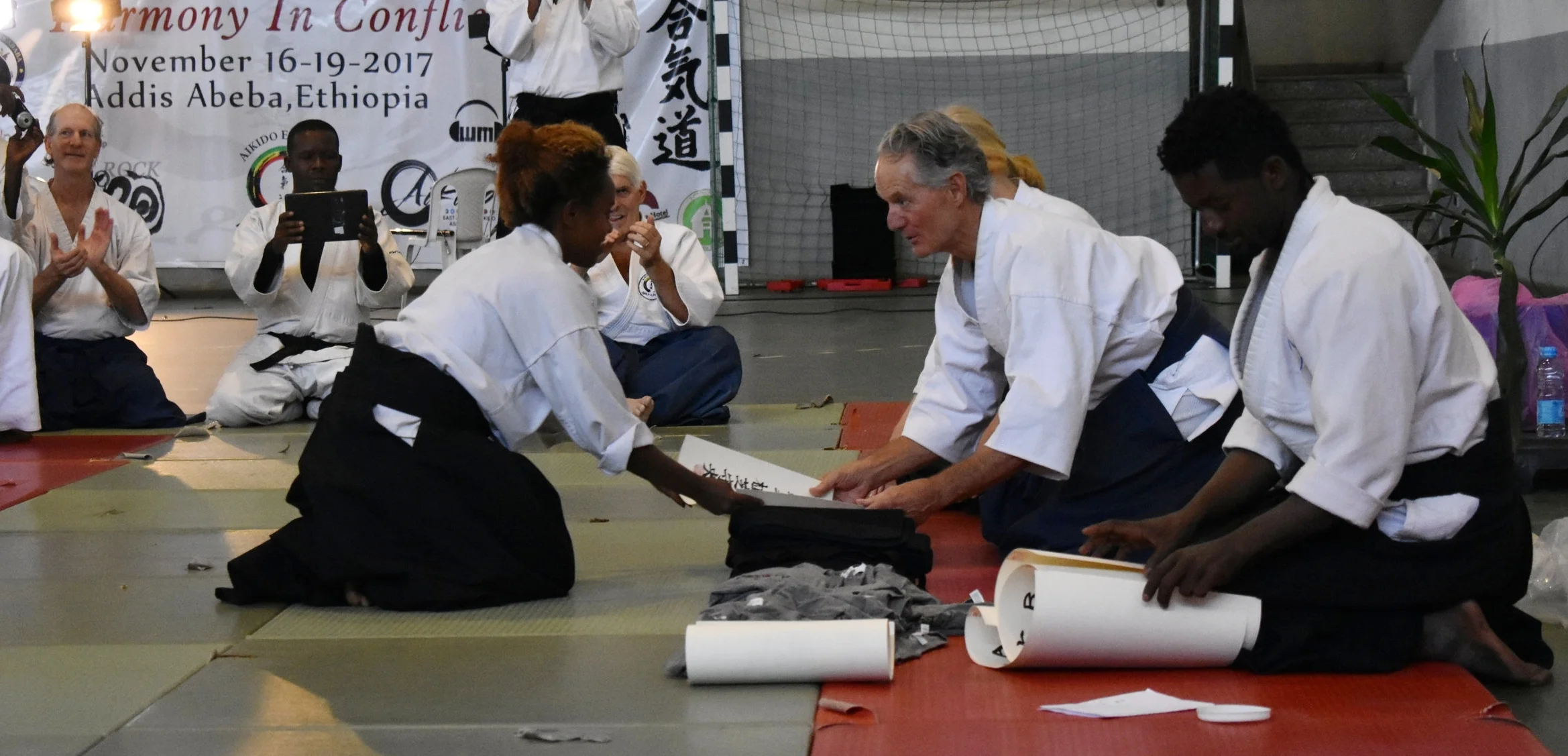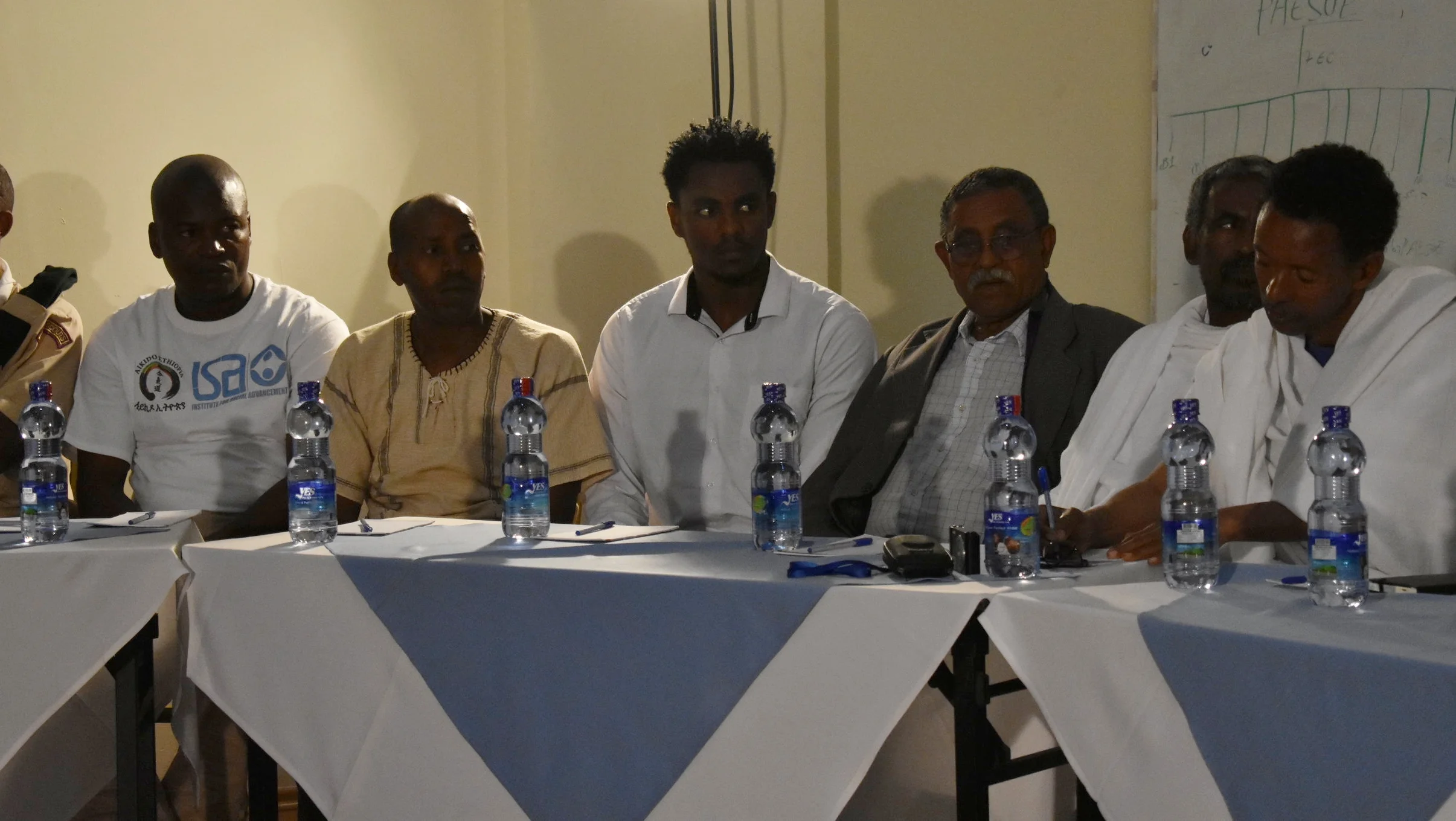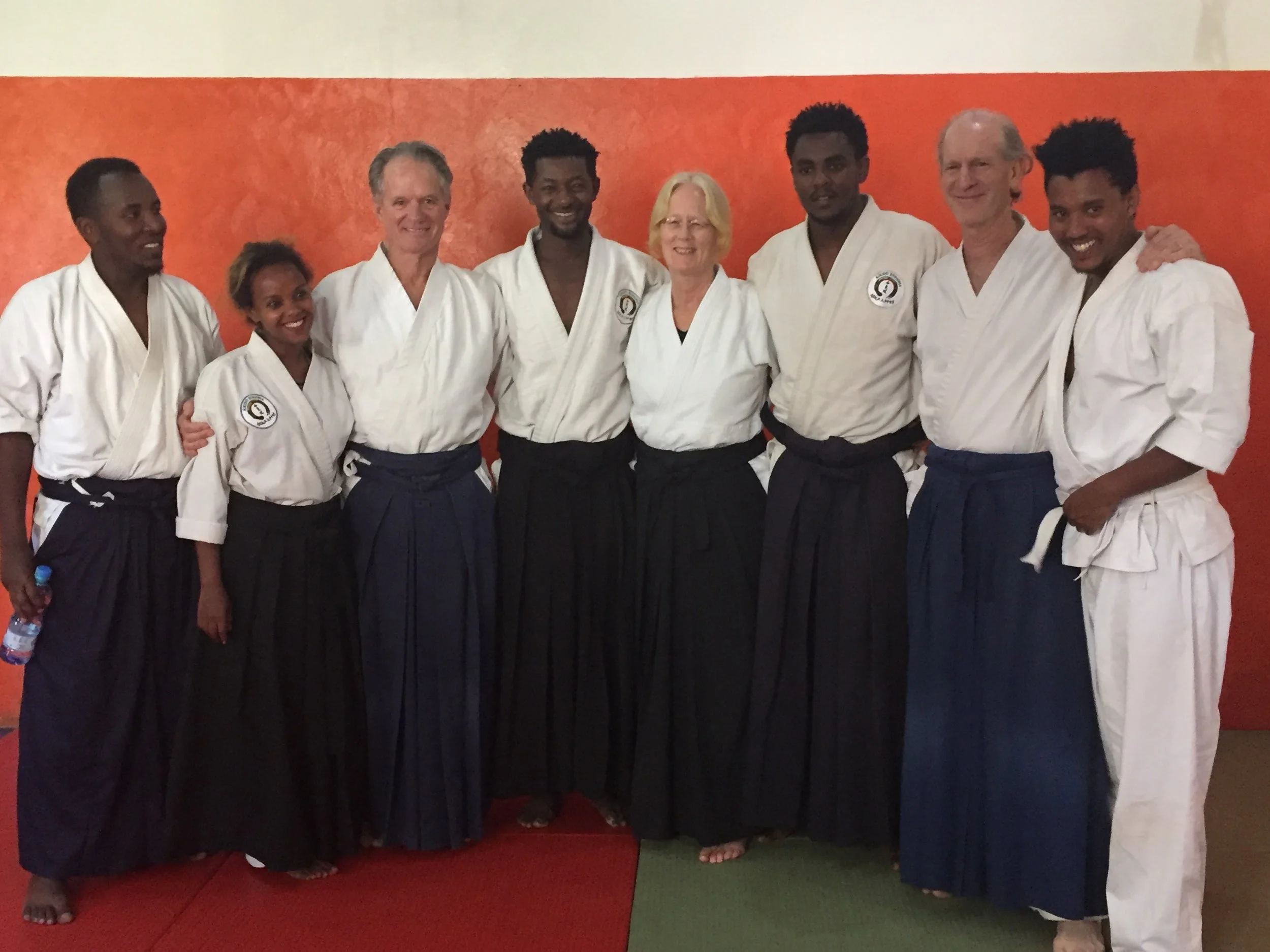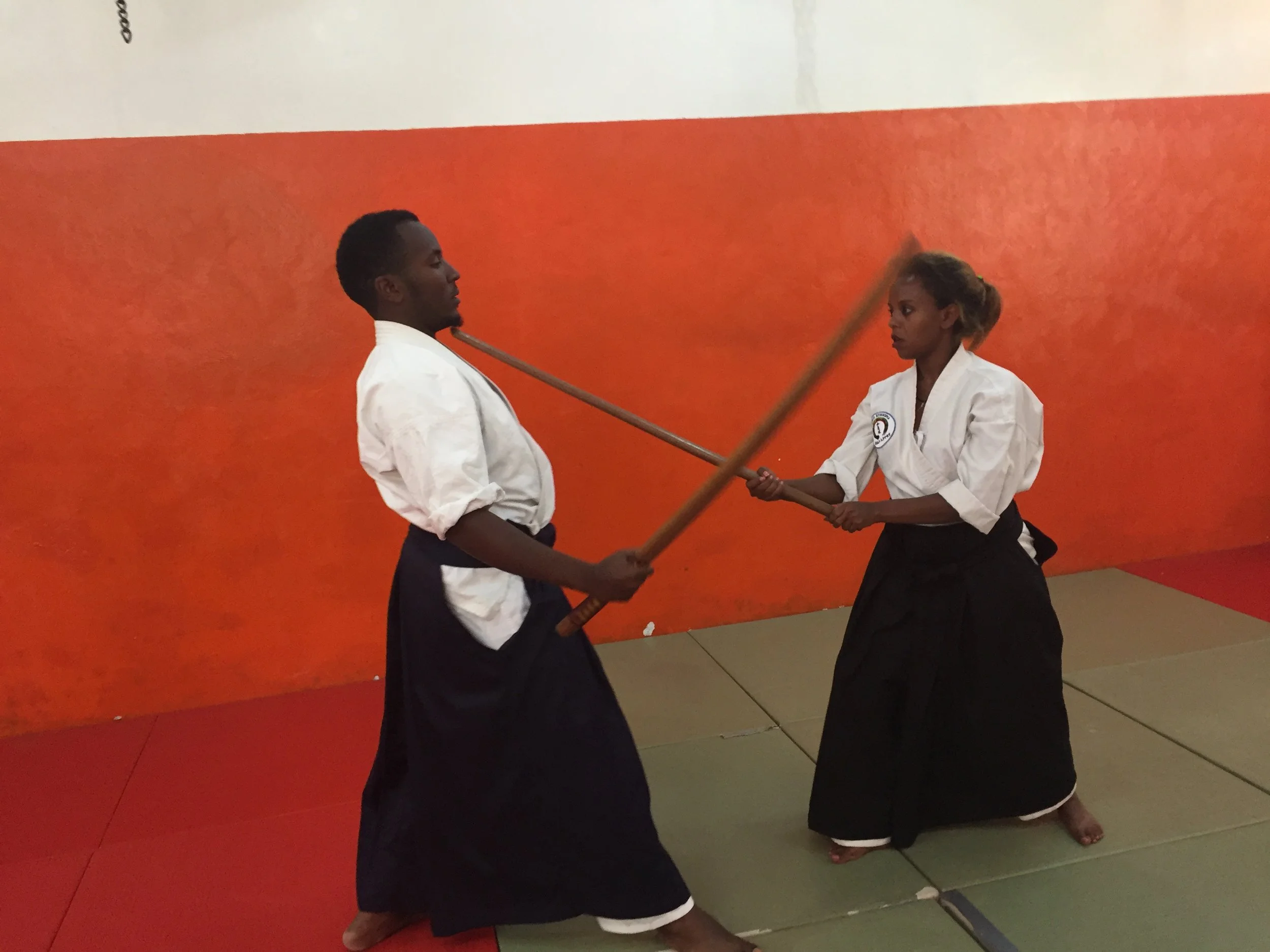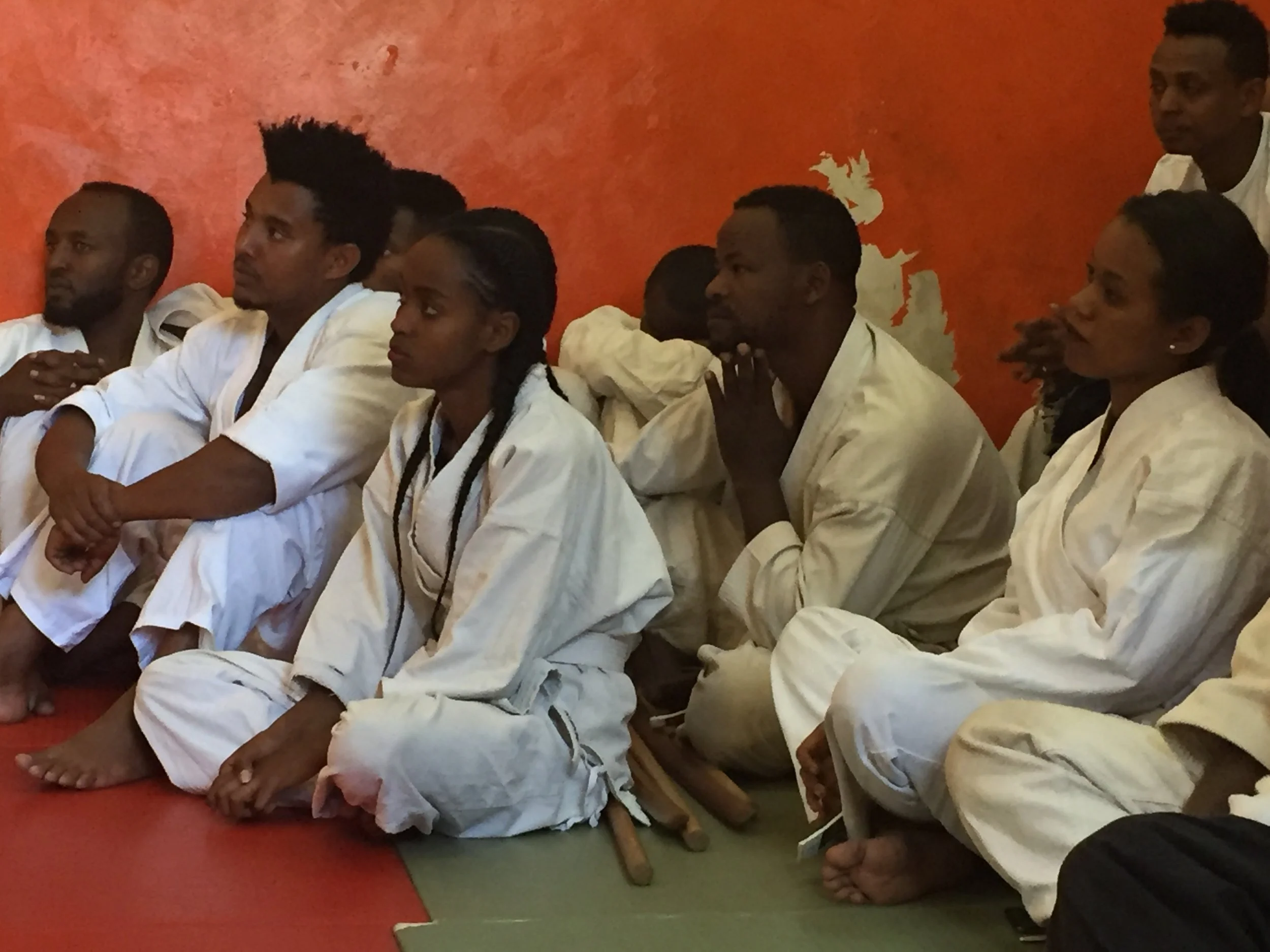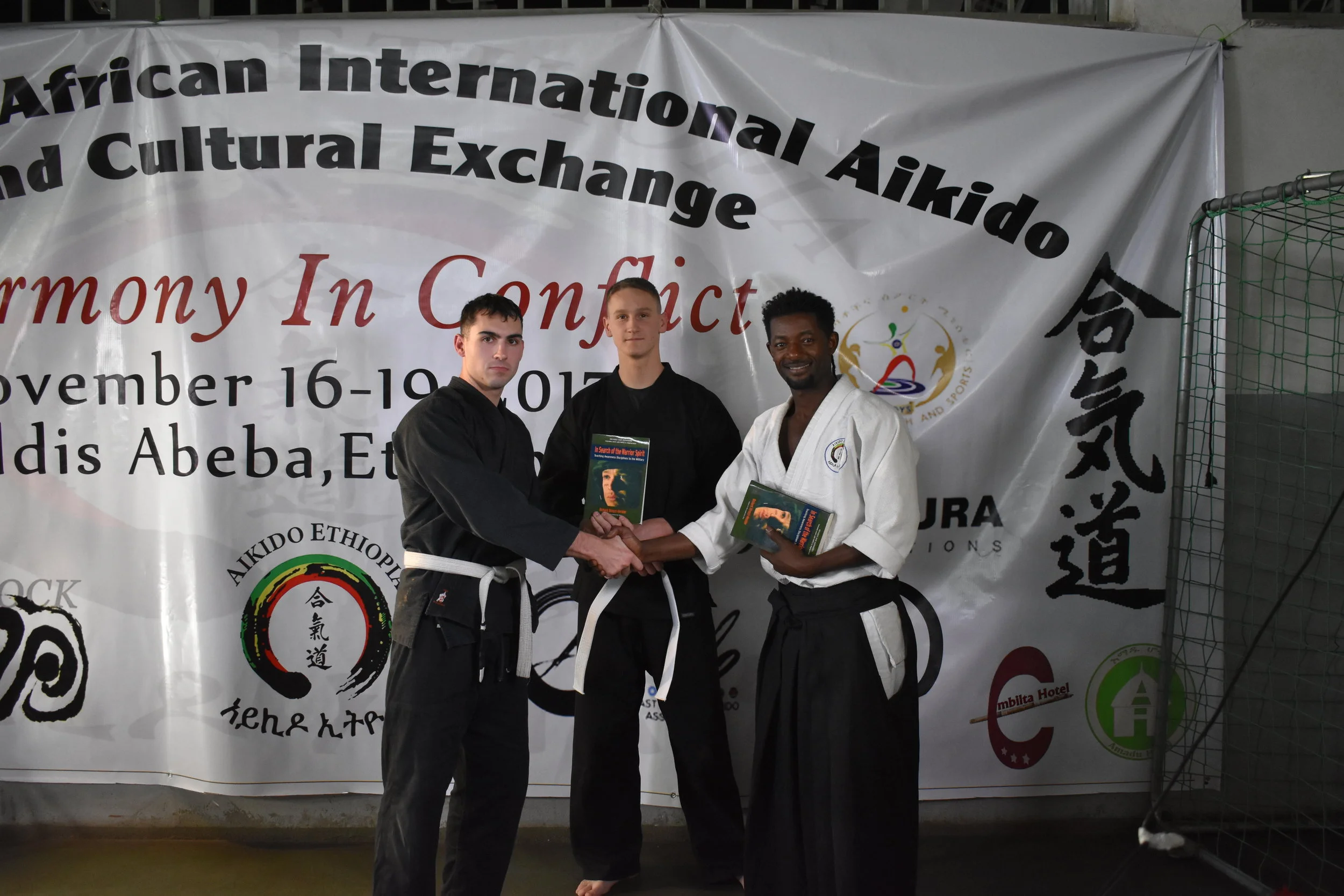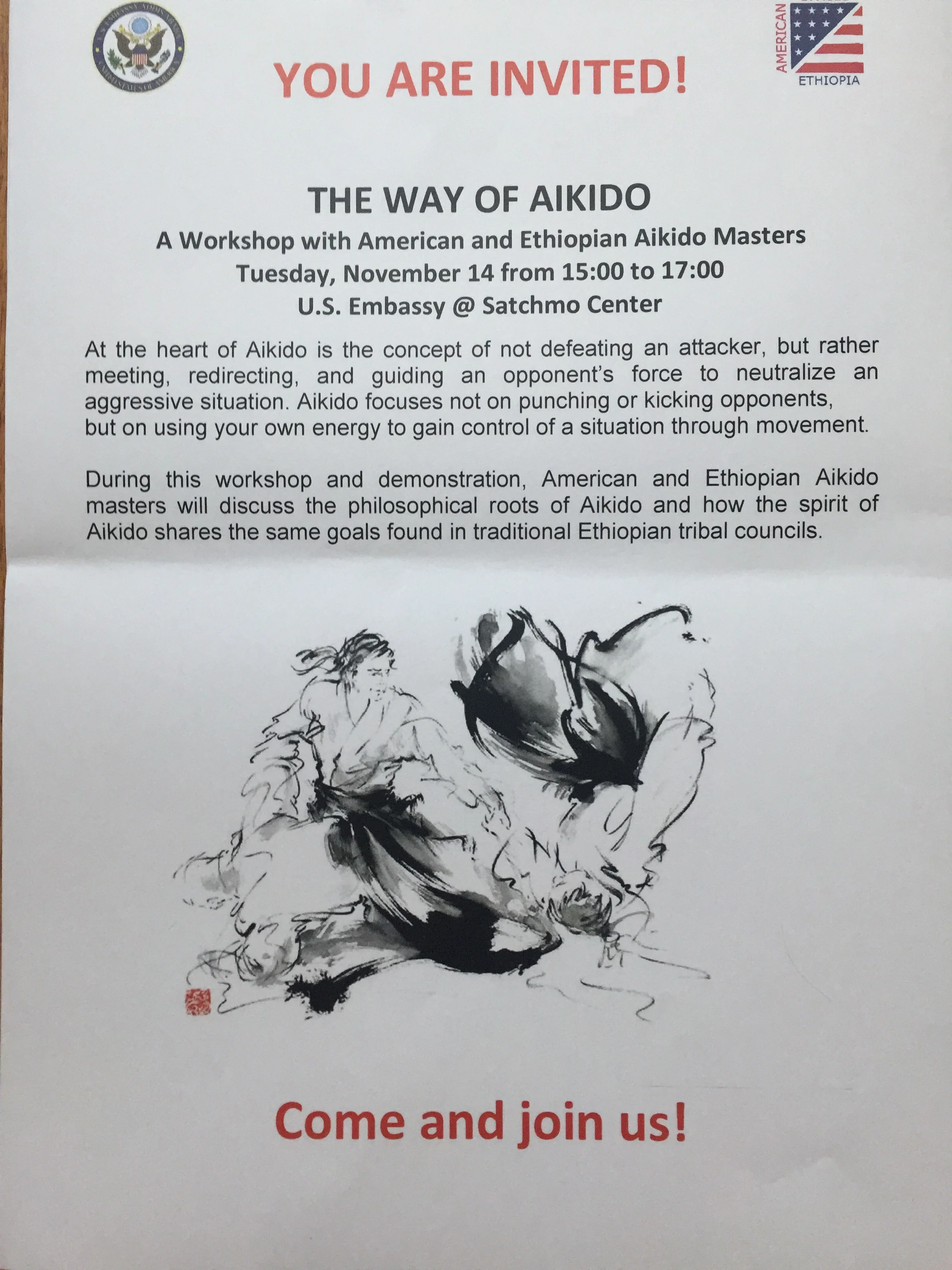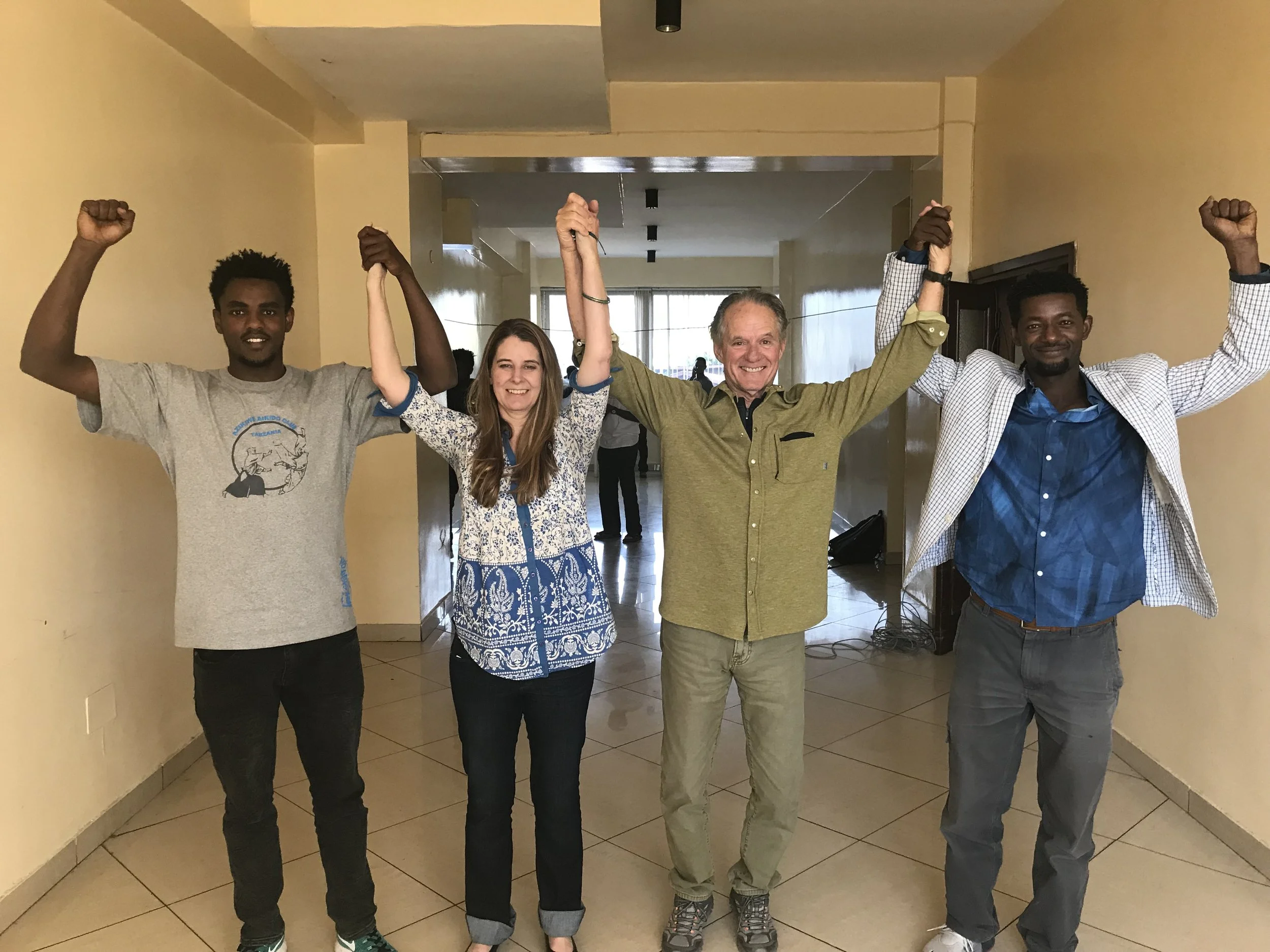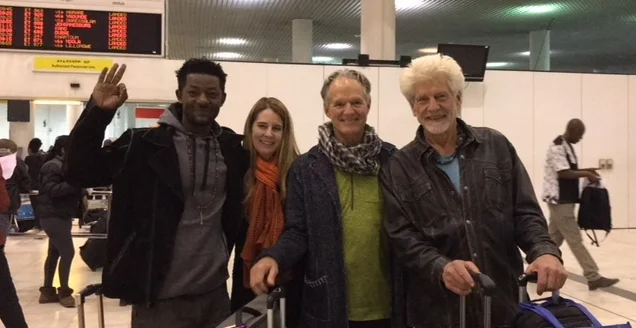Aikido: A Martial Art with Mindfulness, Somatic, Relational and Spiritual Benefits
for Veterans
David Lukoff, PhD
Sofia University
Palo Alto CA
Richard Strozzi-Heckler, PhD
Strozzi Institute
Oakland CA
This manuscript is in press for Spirituality in Clinical Practice © 2017, American Psychological Association. This paper is not the copy of record and may not exactly replicate the final, authoritative version of the article. Please do not copy or cite without authors permission. The final article will be available, upon publication, via its DOI: 10.1037/scp0000134
Abstract
Aikido is a martial art which originated in Japan and incorporates meditation and breathing techniques from Zen Buddhism. Like all martial arts, it requires mindful concentration and physical exertion. In addition, it is a compassion practice that also provides a spiritual perspective and includes social touch. These components make Aikido a unique form of mindfulness that has the potential to be particularly appealing to veterans coming from a Warrior Ethos tradition who are used to rigorous somatic training. Mindfulness practices have shown efficacy with veterans, and the self-compassion, spiritual, and social touch dimensions of Aikido also offer benefits for this population, many of whom are struggling with these issues. Several pilot Aikido programs with veterans that show promise are described.
Aikido, like all martial arts, requires mindful concentration and physical exertion. In addition, it is a compassion practice that provides a spiritual perspective and social human touch. Aikido emerged in 20th century Japan following an evolution of martial arts over hundreds of years from a system of fighting arts (bugei) designed to inflict injury and death, into a Way (in the Eastern sense of Tao or “do”-- path of self-development). Aikido translates as the path (do) to a union (ai) with life-energy (ki). The founder of Aikido, Morihei Ueshiba (1964), who was considered a “national treasure” for his martial arts mastery, had a spiritual awakening in which he realized,
The Way of the Warrior has been misunderstood. It is not a means to kill and destroy others. Those who seek to compete and better one another are making a terrible mistake. To smash, injure, or destroy is the worst thing a human being can do. The real Way of a Warrior is to prevent such slaughter – it is the Art of Peace, the power of love. (Hyodo, 2010, p. 76)
Ueshiba highlighted the self-development and spiritual dimensions in his martial art, and described it as “The Way of Harmony.”
Aikido emphasizes working with a partner, rather than sparring, grappling or fighting against an opponent in competitive tournaments. Aikido techniques neutralize and control attackers instead of violently defeating them. Blending movements are used with breathing practices to somatically create harmony in conflictual encounters (Shioda, 1991). It has often been described as a moving meditation because it involves concentrating purposefully on each technique element, being aware of others, maintaining balance, controlling breathing, and connecting with the training partner. These actions establish a psychophysiological state of relaxed attention in which one responds quickly, precisely, and courageously to physical attacks, including those by multiple attackers (Lothes, Hakan & Mochrie, 2015).
The authors have decades of experience utilizing Aikido with veterans and active military. We believe that Aikido has unique appeal and benefits for these populations because it is a martial art that is also a mindfulness practice, somatic exercise, compassion practice, and spiritual path while also providing opportunities for social touch. Veterans are at high risk for committing suicide with an average of 20 veterans a day dying from suicide in 2014 (Currier, Kuhlman, & Smith, 2015). PTSD is the most common psychological condition diagnosed among military personnel and contributes to a wide range of other adverse health outcomes including panic attacks, depression, substance abuse, sleep disturbance, family dysfunction, and occupational impairment (Currier, Kuhlman, & Smith, 2015). Aikido is discussed here as a practice that has the potential to be particularly beneficial for veterans struggling with these problems.
I. Mindfulness Practice
Historically, meditation and related breathing exercises have been a part of Japanese martial art traditions since the days of the Samurai in medieval Japan where warriors who dealt with life and death everyday embraced the meditation practices of Zen monks to help them calm their mind and body (Lothes, Hakan, & Kassab, 2013; Stevens, 1992, 2002). Like tai chi, Aikido is often described as moving meditation or mindfulness in motion that requires stilling of the mind while the body is in motion. The training process has many parallels with meditation training. An Aikido student trying to learn an unfamiliar technique is likely to have distracting thoughts, such as “which foot goes where? or “I’m not doing it right.” This is similar to the novice meditator who finds it difficult to stay focused on their breath or mantra. But over time, with practice, both the meditator and the Aikido practitioner improve their ability to recognize a distracting thought and come back to the present.
With continued training, Aikido students learn ways to defend themselves from not only physical attacks, but from verbal and emotional attacks as well. For this reason, Aikido practices have been incorporated into non martial arts mindfulness programs such as Jon Kabat-Zinn’s well-researched and widely disseminated Mindfulness Based Stress Reduction program (MBSR; Kabat-Zinn et al., 1992). For example, in one exercise developed by George Leonard (1999), an Aikido sensei (teacher), MBSR students break up into pairs in order to,
help us to act out with our bodies, in partnership with another person, the experience of responding instead of reacting in threatening and stressful situations…In class, the partner who is “attacking” always represents a situation or person who is “running you over,” in other words, causing you stress. After trying reactions such as pushing to fight back (fight), running away (flight) and cowering (freezing), the MBSR training requires what is called blending in aikido…It requires that we be aware of the other person as a stressor without losing our own balance of mind. (Clark, 2017, M.B.S.R. Course: Aikido)
Remaining calm and balanced amidst conflict is a mindfulness skill that is not an automatic response, but can be learned through practices that involves rigorous training in an alternative response to the ‘fight or flight’ reaction. This method of dealing with conflict from a relaxed grounded stance becomes a new learned coping response to stress in all forms of conflict, not just physical (Heckler, 1985; Strozzi-Heckler, 1993).
While research documenting that training in Aikido enhances mindfulness is more limited than for sitting meditation techniques, there are a few studies that establish this connection. Lothes et al. (2013) investigated 159 participants using two empirically validated scales of mindfulness and awareness: the Kentucky Inventory of Mindfulness Skills (KIMS) and the Mindfulness Attention Awareness Scale (MAAS). Their survey asked participants their Aikido rank, which roughly corresponds to the number of years of regularly attending Aikido classes. A comparison group of non Aikido practitioners who were not engaged in any mindfulness practices was also assessed. The Pre Black Belt group with 3-44 months of training scored significantly higher than the Control group on both measures, and the Black Belt group with 66-348 months of training scored significantly higher than both the Control group and the Pre Black Belt group.
Longitudinal research by the same authors studied 12 Aikido students with no prior martial arts experience from their beginning through their first belt ranking tests (approximately 9 months of training). A control group of participants was recruited from a psychology class. A one-way repeated measures ANOVA showed a significant effect of Aikido training on the KIMS (p < .0001) and also on the MAAS (p < .01). Post hoc t tests run between Aikido and Control groups on the KIMS and MAAS scores at each testing time showed statistically significant differences between the Control and Aikido groups that were not present at baseline.
Lothes et al., (2015) conducted a second longitudinal study with five Aikido students from the start of training through to their obtaining their black belts (a minimum of five years of training) at the University of North Carolina Wilmington Aikido Club. The KIMS and MAAS were administered to these participants at 9 month intervals during their training. One-way repeated measures ANOVAs showed a significant effect of Aikido experience on the KIMS between start and black belt (p <. 0334) and also on the MAAS between start and black belt (p <.05). This longitudinal study documents the long-term effects of Aikido training on mindfulness, and the results from these three studies suggest that Aikido significantly enhances mindfulness. Tai chi, also considered a martial art and moving mindfulness practice (with some traditions emphasizing health benefits over martial prowess), has also demonstrated a positive impact on mindfulness in studies (Wayne, 2013).
Prior research has already established that, “Mindfulness-based modalities have shown particular promise in veteran populations dealing with PTSD” (Kopacz & Connery, 2015 p. 64). One vivid example is Rudy Reyes (2009), a Recon Marine who has written a book and been featured in HBO’s Generation Kill and the History Channel’s Apocalypse Man. In these media he describes how the psychological and spiritual damage he suffered from tours of duty in Iraq and Afghanistan were repaired by the practice of Asian martial arts disciplines.
II. A Somatic Practice
Martial arts training typically requires constant bodily movement throughout a 60-90 minute class. While no study has demonstrated the effects of Aikido on aerobic capacity, studies with other martial arts have shown that practitioners have better aerobic capacity, balance, strength, body fat percentages, and flexibility compared to sedentary controls (Douris, and Chinan, 2004). One review of the research concluded:
Martial arts are an increasingly common and important form of exercise for many individuals. While any form of exercise benefits physical well-being, martial arts may also improve the practitioner’s sense of psychological well-being. (Woodward, 2009, p. 42)
Tai chi practices involve movements that are similar to Aikido but are mostly done without a training partner. Tai chi has been shown to increase lung capacity (Jahnke, Larkey, Rogers, Etnier & Lin, 2010) as well as benefiting “participants by increasing flexibility, reducing symptoms of depression, decreasing anxiety, and improving interpersonal sensitivity...balance, run times, quality of sleep, symptoms of compulsion, somatization and phobia, and decreased hostility” (Webster et al., 2016, p. 103; also Solloway et al., 2016).
The research demonstrating that somatic exercise has benefits for the brain and body is compelling, including reductions in depression, enhanced well-being, and improved memory and cognitive processing. Somatic exercise has been used as a form of behavioral activation in treatment of depression to increase engagement in activities that improve mood (Mazzucchelli, Kane, & Rees, 2010). Exercise triggers the release of serotonin, norepinephrine, endorphins, and dopamine that improve mood, reduce pain, and relieve stress. Exercise has also been found to facilitate neurogenesis including creating stronger connections between brain regions, reducing age-related brain atrophy, increasing blood/nutrient flow to active regions, strengthening existing synapses, and building new synapses through the release of Brain-Derived Neurotrophic Factor (BDNF) (Ratey, 2013).
Meditative Movement has been proposed as a new category of somatic exercise with unique benefits (Larkey, Jahnke, Etnier, and Gonzalez, 2015). From a neuroscience perspective, Russell and Arcuri (2015) argue that,
By moving in a mindful way, there may be an additive effect of training as the two elements of the practice (mindfulness and movement) independently, and perhaps synergistically, engage common underlying systems (the default mode network)…[W]orking with mindful movement may be one route to mindfulness training for individuals who would struggle to sit still to complete the more commonly taught mindfulness practices. Drawing on our clinical experience working with individuals with severe and enduring mental health conditions…[mindful movement] can be used to help those who are suffering and for whom current treatments are still far from adequate. (p. 1)
John Ratey, MD is a Clinical Professor of Psychiatry at Harvard Medical School, and an internationally recognized expert in neuropsychiatry with over 60 peer-reviewed articles and 11 books focused on the brain-fitness connection. When he was asked during an interview which sports or activities were the most beneficial for the brain, his answer was martial arts:
I think the very, very complicated ones. One is tae kwon do or karate, jujitsu--using your movement while you're learning and focusing and training your movements and then interacting with another person. All that puts a great strain on the brain, which the brain actually loves. (“Exercise and the Mind”, 2001)
III. A Compassion Practice
Compassion is the emotional response of caring for and wanting to help those who are suffering (Goetz, Keltner, & Simon-Thomas, 2010). Recent studies have shown that compassion training improves personal well-being, reduces stress-related immune responses, and increases positive affect, psychological and somatic health, and prosocial behavior (Lutz, Brefczynski-Lewis, Johnstone, & Davidson, 2008). These studies utilized a Buddhist practice called metta (“lovingkindness”) in which compassion is cultivated towards different people, including loved ones, strangers, difficult persons, and ultimately all people (Salzberg, 1997). Compassion training always includes self-compassion which emphasizes kindness towards one’s self, a feeling of connectedness with others, and acceptance of distressing experiences (Neff, Kirkpatrick, & Rude (2007). Self-compassion can be a helpful self-care skill for coping with the guilt and shame that many veterans report as well as other symptoms of PTSD (Thompson & Waltz, 2008).
Developing compassion for others is inherent in the practice of Aikido (Frager, 1977). An oft cited quote from Ueshiba in dojos is, “To injure an opponent is to injure yourself. To control aggression without inflicting injury is the Art of Peace” (Stevens, 1992). This stance of extending compassion to all human beings inculcates the sincere desire to not harm others, including attackers despite their aggression, but to “reconcile where there is strife” (Westbrook & Ratti, 1970, p. 361). Aikido training enables a person to better control somatic and emotional reactions, thus allowing that person to behave in accordance with a philosophy of conflict resolution in situations that would otherwise trigger automatic behavioral reactions. An Aikidoist learns how to avoid confrontations or clashes with a challenger. Instead, he or she,
accepts, joins, and moves responsively with the flow of the challenger’s energy in the direction in which it is going. Such blending quells resistance, because the Aikidoist offers nothing for the challenger to resist. Hence…the Aikidoist can guide the challenger in more positive and constructive directions. (Saposnek, 1986-1987, p. 124)
Defensive skills and control techniques allow the Aikidoist to contain the attack so that neither he/she nor the attackers are harmed. In contrast, other martial arts include techniques designed to hurt an opponent. Aikido sensei also inform and remind students that the physical practices of Aikido teach how to cooperate with others outside of the dojo (Heckler, 1985; Westbrook & Ratti, 1970).
Another dimension of compassion in Aikido is that both partners need to take care of each other to ensure that the training is safe. Incorrect movement on the part of either partner may increase vulnerability to injury. Martial practices require attention to the well-being of one’s partners, which is the essence of compassion.
Conflict resolution techniques usually begin with first attempting to understand the other person’s point of view. Within the context of a social interaction, blending entails listening, accepting, acknowledging, and empathizing with the other person’s point of view while simultaneously maintaining one’s own point of view. Kroll (2013) and Levine (1994) have explicitly extended Aikido training to verbal arguments to show that there are more options available than dominating, obliging, or avoiding when conversing with others on contentious issues: “aikido affords a framework for understanding argument as harmonization rather than confrontation” (Kroll, 2008, p. 451). This “expands…options for engaging in verbal conflict” (Kroll, 2015, p. 221). Aikido sensei Mitsugi Satome described it this way, which applies to both physical and verbal attacks: “When someone grabs your wrist it does not mean the start of a fight; it is the beginning of a conversation” (Levine, 2015). Through the use of Aikido-based somatic practices with military and veterans, I (RS-H) have found that, “it’s possible to learn to make this kind of connection that creates deep listening to others, fosters genuine trust, encourages respect and dignity in the treatment of others and the negotiation of conflict in a way that results in a win-win for all involved” (Strozzi-Heckler, 2007, p. 421).
IV. A Spiritual Practice and Community
Spirituality is “the direct experience of one’s connection and unity with others and the world” (Sperry, 2016, p. 222). In contemporary society, at least a quarter (and increasing) number of people practice secular spirituality outside of established religious institutions and identify as “spiritual but not religious.” While America is a quite diverse country, for a majority of the population, their religious faith is still their main source of spirituality (Pew, 2015). Aikido can be considered a spiritual practice, but it is not a religion. To train in Aikido does not require adherence to any person or dogma. It has no cosmology or specific political, economic, social agenda other than harmonizing conflict to create peace. Aikido has no specific prescription or requirements for how one must live one’s life (e.g., The Ten Commandments). The core of its spiritual beliefs focus on creating or restoring peace and harmony in human relationships, including within oneself.
Aikido has been influenced strongly by Shintoism, Confucianism, and Buddhism (Stevens, 1992, 2001). It is practiced in a dojo, a word with Buddhist origins meaning “Place of Awakening.” Contemporary Aikido has preserved this spiritual heritage by fostering an acceptance of death and conflict without fear and attending to the present without distraction. Yet historian Taylor (1977), founder of the Harvard Aikido Club, has argued that Aikido has evolved in America from its Japanese roots to shift the emphasis from,
a martial art to a spiritual discipline…The context in which it is taught is neither Japanese nor for purposes of martial combat…but for personal growth appropriate to the changing textures of American consciousness…[This has led to] the development of a fluid style that is uniquely contemporary and American in character. (p.12)
In her ethnographic study of an Aikido dojo, Rothman (2000) found that the intimate somatic contact that occurs during training, combined with the spiritual goal of creating harmony in the universe and in one’s self, produced bonds among the Aikidoists. A phenomenological interview study with Aikido practitioners concluded that Aikido is a transformational practice that: a) results in a perceptual shift toward seeing oneself and the world as interconnected flows of energy; and b) gives rise to the ability to extend love to others (Olliges, 2008). Practitioners often describe this flow of energy as ki and report developing an experiential embodied understanding of harmony, energy and spirituality (Palmer, 2002).
In the U.S. Army’s Comprehensive Soldier Fitness (CSF) program, spiritual fitness is considered a source of resilience for:
being able to accept the reality of a situation, develop creative coping strategies, find meaning in trauma, maintain an optimistic view of the future, access their social support network, generate the motivation to persevere, grow from adversity, and mitigate serious psychological problems such as posttraumatic stress disorder. (Pargament & Sweeney, 2011, p. 59).
Like most religions and spiritual practices, Aikido fosters learned optimism toward the world (Sethi and Seligman, 1993), and resilience (Faggianelli and Lukoff, 2006), both core aspects of spiritual fitness.
It is well-documented that many veterans have spiritual struggles related to moral injury and other aspects of their military life. Research has shown that spiritual fitness is a coping resource that improves outcomes from these struggles (Kopacz & Connery, 2015). Aikido may be particularly helpful for some veterans who are experiencing spiritual struggles where their “old meanings fail to provide comfort and solace, [and] they are left to look for new explanations, values, and beliefs” (Kopacz & Connery, 2015, p. 62; Lukoff, Lu, & Turner, 1992).
In addition, a protective factor identified in suicide prevention “is participation in personally meaningful activities, typically within a social context that brings the individual into contact with various resources and source of social support” (Bryan, Graham, & Roberge, 2015, p. 75). The multiple psychological and somatic health benefits of church membership are well-documented and could apply to being a member of an Aikido dojo, including lower likelihood of suicidal ideation, attempts, and deaths for which veterans are at high risk (Currier, Kuhlman, & Smith, 2015; Vieten, Scammell, Pierce, Pilato, Ammondson, Pargament, & Lukoff, 2016). Martial arts training programs that incorporate the core values of Aikido to develop spiritual fitness have been successfully implemented by the author (RS-H) with Special Forces and in the Marine Corps Martial Arts Program (MCMAP) (Strozzi-Heckler, 2007). Within the Marine Corps, “where units are training regularly [in MCMAP], there is a significant reduction in alcohol and drug abuse, domestic violence, police incidents…unauthorized absences, lateness, fighting, and poor morale” (Strozzi-Heckler, 2007, p. 367). Aikido dojos offer the structure and environment for developing spiritual fitness by fulfilling basic needs for coping skills, relational connection, meaning, and social support within a spiritual context.
V. Social Touch
While there is a weapons component in Aikido, most techniques are executed using hands. Open handed combat was taught to samurai for situations when they could not use their sword, spear, or bow and arrow, such as if they became disarmed in battle or were in a place where carrying weapons was forbidden. In contemporary Aikido practice, hands are used to connect with a partner rather than to punch or strike them. As one Aikido sensei describes it:
In Aikido, as opposed to some other martial arts, the skin is being touched. It is not being hit, kicked or punched. There is contact, skin to skin. And for many people, this is the first time they are being touched by another human being that day. It changes the flow of the internal and external conversation we have with ourselves, and with others. We need to include another person now…Aikido involves an almost joyful willingness to be touched, to want to touch. (Rest, 2015, p.72-3)
Another sensei also views touch as foundational to Aikido:
It's really a quality of touch that you're trying to learn. In general, your hands must be soft and yielding. Keep your hands very relaxed and heavy. You never want to grab or clutch. This cuts off your ki and makes it impossible to feel where your partner is going. A light, soft, relaxed touch is all that is necessary. (Bornstein, 1998)
Aikido includes frequent skin-to-skin contact and many techniques require that bodies be positioned next to each other, and that hands touch necks and arms, and sometimes faces. In the dojo, students consent to being touched. Some who are uncomfortable with this kind of intimate touch discontinue their training.
Touch has important benefits for humans as primates. Grooming among many primate groups occupies 20% of time spent together, much more than is necessary for hygienic needs such as removing lice (Dunbar, 2010). American society has strong taboos against intimate touch, and many consider America to be a touch-deprived culture. Studies have shown that people in the USA touch each other much less than people in many other cultures. For example, American, French and Puerto Rican friends were observed in a coffee shop to determine how frequently physical contact occurred. American friends touched each other an average of only twice an hour, whereas French friends touched 110 times, and Puerto Rican friends touched 180 times (Field, 2014). Yet touch has a positive effect on growth, brain waves, breathing, and heart rate, and decreases stress and anxiety (Derlega, Cantanzaro, & Lewis, 2001). Lack of touch is associated with depression, eating disorders, aggression, and self-injurious behaviors (Field, 2014).
Touch is our most social sense. Seeing, hearing, smelling, and tasting can generally be done alone. Some neuroscientists even consider the skin a "social organ" (Morrison, Löken, & Håkan, 2010). All primates, from monkeys to homo sapiens, rely on social touch. Among nonhuman primates, grooming is used to garner favors, earn social standing, increase access to resources. It is also a form of nonverbal communication that signifies a bonding gesture (Heslin and Alper, 1983). Humans are endowed with a second nerve network in the skin consisting of slow-conducting tactile C fibers that sense affection and tenderness. This network responds only to a gentle touch and activates areas of the brain involved in emotions. In addition, the human hand possesses a particularly refined sense of touch that can detect a raised spot just three microns high (a human hair has a diameter of 50 to 100 microns). This remarkable sensitivity is attributable to about 2000 touch receptors in each individual fingertip (Flanagan, Randall, & Lederman, 2001). The soothing power of touch is attributed to the release of oxytocin and endorphins and decrease in cortisol when being touched (Field, 2014).
While emphasizing touch may at first seem out of bounds within military healthcare, touch has been recognized through the development and rollout of the US Army Nursing Corps “Patient Caring-Touch System, a system that has allowed us to closely listen to the voices of our patients and our staff” (Gordon, 2012, p. 1). Many veterans report that they miss the camaraderie and intimacy they had with their military buddies. In addition many have problems controlling arousal when feeling threatened which interferes with giving or receiving social touch. Practicing social touching and also receiving caring touch constitute additional potential benefits of Aikido practice for veterans.
Aikido with Veterans
The VA has an active adaptive sports program whose goal is to help veterans transition from the VA into society by using adaptive sports to help them adjust. They have been supporting Tai Chi, Qigong, Taekwondo, and Judo, and this year Aikido was added to the VA Adaptive Sports Program in the Denver region. The benefits of Aikido as summarized in this article are echoed in this text from the homepage of the VA Adaptive Sports program:
Disabled Veterans of all ages and abilities report better health, new friendships and a better quality of life when participating in adaptive sports. Disabled Veterans who are physically active simply have more fun!
(https://www.va.gov/adaptivesports/)
Several projects are bringing Aikido training to veterans. Aikido for Veterans & Families is a nonprofit organization in Colorado that recently applied to the VA Adaptive Sports Grant Program for funding. For the past several years, free training has been offered to veterans and their family members at a dojo in Colorado Springs just outside Fort Carson. They are working with the Denver VA Department of Recreation Therapy. David Drake, co-founder of the program, reports that, "Veterans participating over a period of just a few sessions have reported feeling calmer, more capable of adjusting to situations outside their control, and are experiencing a greater feeling of well being than before they began practicing Aikido" (Aikido for veterans & families, D. Drake, personal communication, January 18, 2017).
Aikido for Veterans & Families has reached out to women veterans, many of whom have experienced military sexual trauma. “Studies conducted by the Government Accountability Office in 2007 indicated that 25% to 50% of all military women experienced some type of sexual harassment, and 20% experienced overt sexual assault during military service” (Van Pelt, 2011, p.8). Aikido for Veterans & Families has established research partnerships to launch a controlled study of outcomes among women veterans associated with this training.
In another program at the Cincinnati VA, psychologist Tobias Weiss observed that during therapy,
I was drawing more and more on my experiences with Aikido to explain the nature of conflict…that the philosophy of Aikido is the perfect augment to challenging irrational beliefs and finding stuck points keeping veterans from trauma recovery…Aikido would offer a physical way of reinforcing the messages of therapy for those who learn more by doing. (Weiss, 2008)
In coordination with Aikido of Cincinnati, he was able to secure mats and instructors. The VA chaplain granted permission to spread mats and create a temporary dojo every Monday night in the chapel on the residential unit. The instructors met with many challenges during the classes including recognizing and addressing the ways that Aikido might trigger re-experiencing of trauma, working with the medical limitations of the veterans, and addressing the deeply ingrained tendencies of individuals with PTSD to avoid conflict at all cost. The feedback from the veterans was overwhelmingly positive: “It improved my sense of well-being.” “It improved concentration.” “I never expected to come in for PTSD treatment and find myself in an Aikido class, but it tied in great with the message of finding a way of becoming unstuck in my recovery" (Weiss, Chard, and Shumm, 2011).
Due to the positive responses, Weiss organized an ongoing Aikido program in both the men's and women's residential units. They also conducted a study of 39 women diagnosed with PTSD who participated in a supplemental Aikido group in addition to the standard 7 week residential Cognitive Processing Therapy (CPT). Their outcomes were compared to a group of 61 women who participated in the CPT program without the Aikido component. There were no pretreatment differences on any of the measures, but at post test, the Aikido group showed a significantly greater decrease in self-reported symptoms of PTSD as measured by the Posttraumatic Stress Disorder Checklist (p < .045), and in depression as measured by the Beck Depression Inventory II (p = .007) (Weiss, Chard, and Shumm, 2011).
Portsmouth Aikido in New Hampshire offers free Aikido classes for Veterans, Uniformed Services Personnel, and First Responders. The program was triggered by the activism and book of veteran sensei Tom Osborn who spent decades of his life bringing Aikido to veterans. For many veterans, service is still an important value from their warrior training. Tom Osborn (2012) embodied this value in his book and numerous training workshops around the USA on Aikido with Veterans. He pointed out that, “It would be nice to contribute to bringing peace to the entire world, or even one little part, but I can only do that as I learn to be a peaceful warrior myself” (p. 87).
Based on his own experience, he argued for the unique benefits of Aikido compared to
Yoga, Tai Chi, Qi Gong and other solo forms of meditation, [that] lack a direct, physical relationship with the feelings of vulnerability and helplessness that are often the root of the underlying trauma. (Osborn, 2012, p. 28)
Aiki-Extensions, a nonprofit organization focused on applications of Aikido off the mat, also has an active program to promote Aikido for veterans (Aikido for veterans launches new program, 2014).
Conclusion
Aikido training is a potentially therapeutic practice for some veterans coping with PTSD. During my (DL) 14 years as a psychologist at the San Francisco Veterans Medical Center, I often used Aikido techniques with patients in PTSD therapy groups as well as in Coping with HIV and AIDS, Coping with Chronic Illness, Coping with Chronic Pain, and Substance Abuse groups. One focus in all of these groups was self-compassion, learning to substitute comforting and caring self-statements for negative self-evaluations. One particularly useful Aikido technique I found was tai no henko which involves one partner grabbing the other’s wrist. The person being grabbed practices dampening down their startle reaction by not engaging in negative self-talk and taking deep breaths and relaxing while being grabbed. Then, with control, he/she gently executes a turn so that he/she is no longer being grabbed but is right next to the attacker, viewing the world from the other’s perspective. For veterans who have relational problems such somatic practices that can trigger compassion for self and others could be a potential resource for improving relational skills. I described this training to them as learning to “roll with the punches” and returning to a centered stance. Many veterans with prior martial arts experience resonated with this martial metaphor of “rolling with the punches” in their lives.
Even veterans who are physically challenged can engage in Aikido practices. A variant called Low Impact Aikido allows a trainee to
have a full experience of aikido without the falls and rolls…You can bring balance, energy, your own center and intention into play on the mat and move your training partner in a powerful and effective manner… aikido as a martial art could be taught and transmitted to those with limited abilities to move on the mat. (Rest, 2016)
However, it should be acknowledged Aikido is not an intervention that would appeal to or benefit all veterans, and also that a strong evidence base for Aikido does not currently exist. We concur this this conclusion reached by Weitlauf, Weiss, Makin-Byrd, Turchik, and the Veteran Safety Initiative Writing Collaborative (2013):
In recognition that self-defense training is an under researched area of intervention, we suggest that patients be encouraged to “test out” training programs in which they are interested, but to do so cautiously, and with a well-informed perspective of the known benefits, unknown risks, and limited evidence for utility as a risk reduction tool. (p. 23)
Conclusion
Many mindfulness practices are a source for wellness, spiritual meaning, community, and compassion. But Aikido has benefits that many other mindfulness practices lack, including providing somatic fitness exercises and opportunities for social touch. Aikido has been less researched than some other mindfulness practices, yet these extra components suggest that Aikido could be particularly appealing to veterans coming from a Warrior Ethos tradition who are used to rigorous somatic training (Strozzi-Heckler, 2007; U.S. Department of the Army, 2006).
References
Aikido for veterans launches new program: Coordinated efforts directly helping veterans recover. (2014, January). Musubi, Aiki Extensions Newsletter. Retrieved from http://www.aiki-extensions.org/news.asp
Bornstein, H. (1998). Aikido from the inside out: Quality of touch. Retrieved from http://www.designeq.com/deq/aikido/insideout/Connection.html
Bryan, C. J., Graham, E., & Roberge, E. (2015). Living a life worth living: Spirituality and suicide risk in military personnel. Spirituality in Clinical Practice, 2, 74 –78. http://dx.doi.org/10.1037/
Clark, D., Schumann, F., & Mostofsky, S. H. (2015). Mindful movement and skilled attention. Frontiers in Human Neuroscience, 9, 297. http://doi.org/10.3389/fnhum.2015.00297
Clark, G. (2017). M.B.S.R. Course: Aikido. Retrieved from http://www.mbsrcourse.net/aikido-full-article
Currier, J. M., Kuhlman, S., & Smith, P. N. (2015). Empirical and ethical considerations for addressing spirituality among veterans and other military populations at risk for suicide. Spirituality in Clinical Practice, 2, 68–73. http://dx.doi.org/10.1037/scp0000057
Derlega, V.J., Cantanzaro, D., & Lewis, R.J. (2001). Perceptions about tactile intimacy in same-sex and opposite sex pairs based on research participants’ sexual
orientation. Psychology of Men & Masculinity, 2, 124-132.
Douris, P. and Chinan, A. (2004). Fitness levels of middle aged martial art
practitioners. British Journal of Sports Medicine, 38, 143-147.
Dunbar, R. (2010). The social role of touch in humans and primates: Behavioral function and neurobiological mechanisms. Neuroscience & Biobehavioral Reviews, 34, 260–268. DOI: 10.1016/j.neubiorev.2008.07.001
Exercise and the Mind. (2001). Infinite Mind #189. [CD ROM]. Cambridge, MA: Lichtenstein Creative Media.
Field, T. (2014). Touch. Cambridge, MA: MIT Press.
Faggianelli, P., & Lukoff, D. (2006). Aikido and psychotherapy: A study of psychotherapists who are aikido practitioners. Journal of Transpersonal Psychology, 38(2), 159-178.
Flanagan, J. Randall, & Lederman, Susan J. (2001). Neurobiology: Feeling bumps and holes. Nature, 412(6845), 389-391.
Frager, R. (1977). Aikido--A Japanese approach to self-development and mind-body harmony. In C. Garfield (Ed.). Rediscovery of the Body. New York: Dell.
Gordon, V. (2012). Womack unveils the Caring Touch system. Womack Army Medical Center Quarterly Newsletter. Retrieved from: http://armynursecorps.amedd.
army.mil/news/ WomackArmyMedicalCenterArticle_Redacted.pdf
Heckler, R. (1985). Aikido and the new warrior. Berkeley, CA: North Atlantic.
Heslin, R., and Alper, T. (1983). Touch: A bonding gesture. In: Wiemann J.M. and Harrison, R.P. (eds) Nonverbal interaction. Beverly Hills, CA: Sage
Hyodo, Rodger (2010). Adjusting though reflex: Romancing Zen. Bloomington, IN: AuthorHouse.
Jahnke, R., Larkey, L., Rogers, C., Etnier, J., & Lin, F. (2010). A comprehensive review of health benefits of Qigong and Tai Chi. American Journal of Health Promotion, 24(6), e1–e25. http://doi.org/10.4278/ajhp.081013-LIT-248
Kopacz, M., & Connery, A. (2015). The veteran spiritual struggle. Spirituality in Clinical Practice, 2, 61-67.
Kabat-Zinn, J., Massion, A., Kristeller, J., Peterson, L., Fletcher, K., Pbert, L., Lenderking, W., and Santorelli, S. (1992). Effectiveness of a meditation-based stress reduction program in the treatment of anxiety disorders. American Journal of Psychiatry, 149(7), 936-943. doi: 10.1176/ajp.149.7.936
Kroll, B. (2008). Arguing with adversaries: Aikido, rhetoric, and the art of peace. College, Composition, and Communication, 59(3), 451-472.
Kroll, B. (2013). The open hand: Arguing as an art of peace. Boulder, CO: Utah State University Press.
Kroll, B. (2015). Rhetorical Aikido: Arguing as an art of peace. In W. Wagner (Ed.), Aikido: The trinity of conflict transformation. Schweinfurt, Germany:
Springer.
Leonard, G. (1999). The way of Aikido: Life lessons from an American sensei. New York: Plume.
Levine, D. (1994). Social conflict, aggression, and the body in Euro-American and Asian thought. International Journal of Group Tensions, 24(3), 205-217.
Lothes, J., Hakan, R., & Kassab, K. (2013). Aikido experience and its relation to mindfulness: A two-part study. Perceptual and Motor Skills, 116(1), 30-39. http://dx.doi.org/10.2466/22.23.PMS.116.1.30-39.
Lothes, J., Hakan, R., & Mochrie, K. (2015). Differences of novice to black belt Aikido practitioners in mindfulness: A longitudinal study. International Journal of Wellbeing, 5(3), 63-71. doi:10.5502/ijw.v5i3.4
Lukoff, D., Lu, F., & Turner, R. (1992). Toward a more culturally sensitive DSM-IV: Psychoreligious and Psychospiritual Problems. Journal of Nervous and Mental Disease, 180(11), 673-682.
Mazzucchelli, T. G., Kane, R. T., & Rees, C. S. (2010). Behavioral activation interventions for well-being: A meta-analysis. The Journal of Positive Psychology, 5(2), 105–121. http://doi.org/10.1080/17439760903569154
Morrison, India, Löken, Line S., & Olausson, Håkan. (2010). The skin as a social organ. Experimental Brain Research, 204(3), 305-314. doi: 10.1007/s00221-009-2007-y
Neff, K. D., Kirkpatrick, K. L., & Rude, S. S. (2007). Self-compassion and adaptive psychological functioning. Journal of Research in Personality, 41, 139–
154.
Olliges, S. (2008). A phenomenological study of the experience of cultivating love for all beings in the practice of aikido. Available from ProQuest Dissertation and Thesis database. (UMI No. 1456516)
Osborn, T. (2012). Combat related Post Traumatic Stress Disorder: A holistic approach. Amherst, MA: Levellers Press.
Palmer, W. (2002). The practice of freedom: Aikido principles as a spiritual guide. Berkeley, CA: Rodwell Press
Pargament, K., & Sweeney, P. (2011). Building spiritual fitness in the Army: An innovative approach to a vital aspect of human development. American Psychologist, 66, 58–64.
Pew Research Center (2015). America’s changing religious landscape. Washington, DC: Pew Research Center.
Ratey, J. (2013). Spark: The revolutionary new science of exercise and the brain. New York, NY: Little, Brown and Company.
Rest, P. (2016). Aikido: An everyday approach to the martial art that can transform your life & the world. Santa Rosa, CA: Paul Frederick Rest.
Rest, P. (2016). A low impact Aikido program — Aikido for everyone. Aikido Journal. Retrieved from http://aikidojournal.com/2016/05/02/a-low-impact-aikido-program-aikido-for-everyone-by-paul-rest/
Reyes, R. (2009). Hero living: Seven strides to awaken your infinite power. New York, NY: New American Library.
Rothman, R. (2000). Aikido sensibilities: The sociosomatics of connection and its role in the constitution of community at North Bay Aikido in Santa Cruz, California. Available from ProQuest Dissertation and Thesis database. (UMI No. 3003213).
Salzberg, S. (2002). Lovingkindness: The revolutionary art of happiness. Boston, MA: Shambala.
Saposnek, D. T. (1986-1987). Aikido: A systems model for maneuvering in mediation. Mediation Quarterly, (14-15), Winter-Spring, 119-136.
Sethi, S., & Seligman, M. (1993). Optimism and fundamentalism. Psychological Science, 4, 256-259.
Shioda, G. (1991) Aikido Shugyo: Harmony in confrontation. Toronto: Shindokan International.
Solloway, M. R., Taylor, S. L., Shekelle, P. G., Miake-Lye, I. M., Beroes, J. M., Shanman, R. M., & Hempel, S. (2016). An evidence map of the effect of Tai Chi on health outcomes. Systematic Reviews, 5, 126. http://doi.org/10.1186/s13643-016-0300-
Sperry, L. (2016). Secular spirituality and spiritually sensitive clinical practice. Spirituality in Clinical Practice, 3, 221-223.
Stevens, J. (1992). The art of peace. Boston, MA: Random House.
Stevens, J. (2001). Philosophy of Aikido. New York, NY: Kodansha America. Strozzi-Heckler, R. (1993). The anatomy of change. Berkeley: North Atlantic Press
Strozzi-Heckler, R. (2007). In search of the warrior spirit. Berkeley, CA: North Atlantic.
Taylor, E. (1977). Aikido: The evolution of a martial art into a spiritual discipline. Somatics, 6, 8-12.
Thompson, B.L. and Waltz, J. (2008). Self-compassion and PTSD symptom severity. Journal of Traumatic Stress, 21, 556–558.
Ueshiba, K. (1984). The spirit of aikido. Tokyo: Kodansha International.U.S. Department of the Army (2006). Army leadership: Competent, confident, and agile (Field Manual 6-22). Washington, DC: Headquarters, Department of the Army. Retrieved from http://www.fas.org/irp/doddir/army/fm6-22.pdf
Van Pelt, J. (2011).Military sexual trauma. Social Work Today,11(2),8-9.
Vieten, C., Scammell, S., Pierce, A., Pilato, R., Ammondson, I., Pargament, K., & Lukoff, D. (2016). Competencies for psychologists in the domains of religion and spirituality. Spirituality in Clinical Practice, 3(2), 92-114.
Wang, F., Man, J., Lee, O., Wu, T., Benson, H., Fricchione, G., Wang, W., & Yeung, A. (2014). The effects of tai chi on depression, anxiety, and psychological well-being: a systematic review and meta-analysis. International Journal of Behavioral Medicine, 21(4), 605-617.
Weiss, T. C. (2008). Aikido and the care of veterans with Posttraumatic Stress Disorder. Retrieved from http://archive.usafaikidonews.com/2008/3/article_2.shtml
Weiss, T. C., Chard, K.M., & Shumm, J.A. (2011). Aikido as an augment to women’s residential PTSD treatment. Paper presented at the Association for Behavioral and Cognitive Therapies, Toronto, Canada.
Westbrook, A., & Ratti, O. (1970). Aikido and the dynamic sphere: An illustrated introduction. Boston: Turtle.

